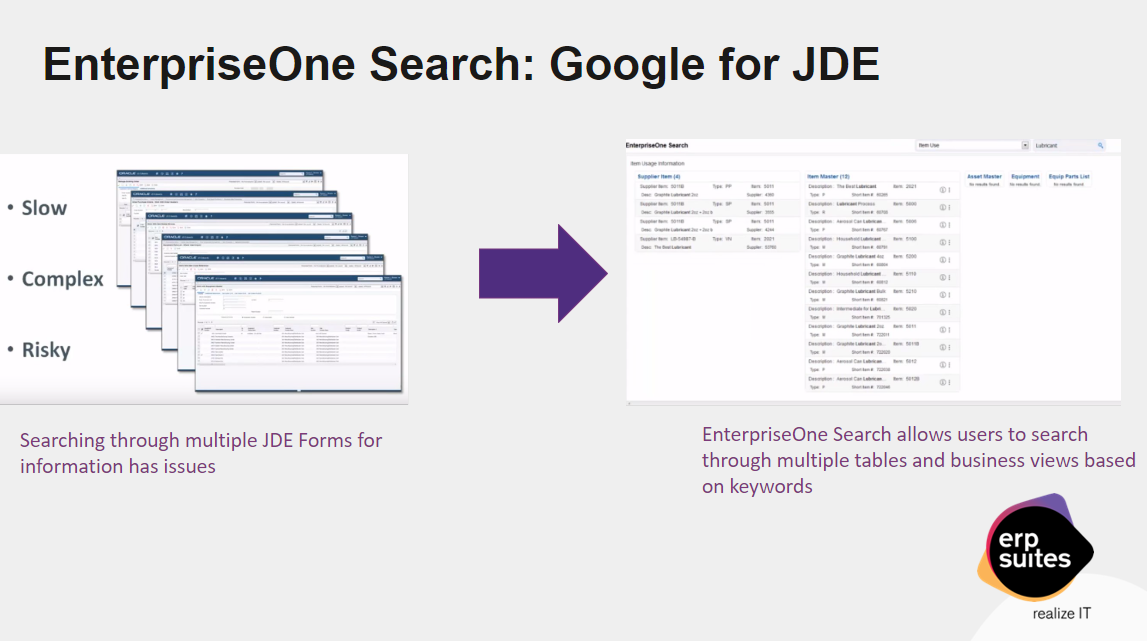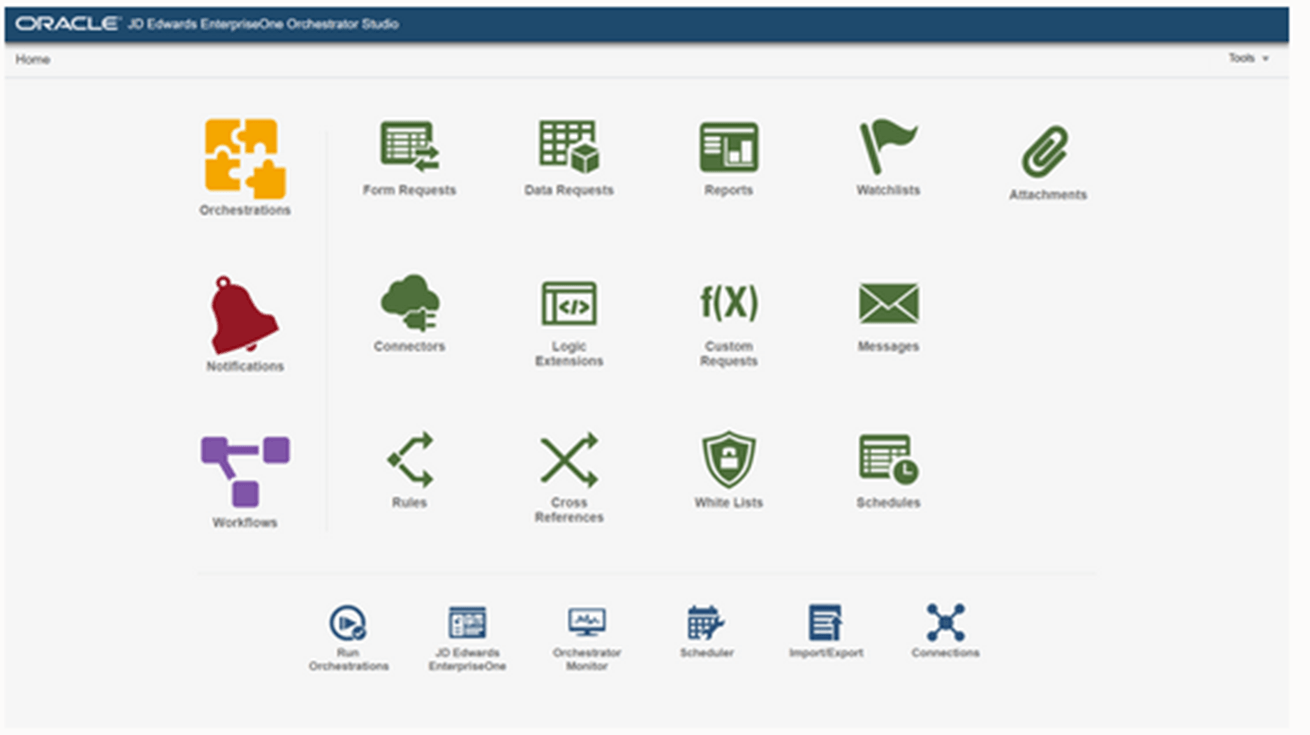How to Secure JD Edwards and AI Systems with Identity & Access Management (IAM)
August 4th, 2025
2 min read
Abstract
Identity and Access Management (IAM) is crucial for businesses using AI and JD Edwards to protect their critical data and ensure compliance. Sean Mead, Information Security Officer at ERP Suites, outlines key IAM components—identity management, authorization, and authentication—and discusses common challenges, essential best practices, and real-world examples that illustrate IAM’s effectiveness in safeguarding enterprise systems.
Table of Contents
-
Introduction
-
Understanding Identity and Access Management (IAM)
-
Importance of IAM in AI and JD Edwards
-
Common Security Challenges without IAM
-
Key Components of IAM
-
Identity Management
-
Authorization
-
Authentication
-
-
Common Mistakes in IAM Implementation
-
Real-World Success Story
-
Integration of IAM with AI and JD Edwards
-
Roles and Responsibilities in IAM
-
Conclusion and Call to Action
1. Introduction
Effective Identity and Access Management (IAM) is foundational for secure business operations, especially when dealing with sensitive JD Edwards data and AI-driven processes. This blog, featuring insights from Sean Mead at ERP Suites, demystifies IAM and provides actionable guidance for implementation.
2. Understanding Identity and Access Management (IAM)
IAM is a security discipline involving:
-
Managing digital identities
-
Verifying user identities (authentication)
-
Authorizing user permissions and access levels
IAM ensures that only authorized individuals have appropriate access, preventing data breaches and unauthorized activities.
3. Importance of IAM in AI and JD Edwards
IAM is essential because it:
-
Protects sensitive data within JD Edwards
-
Controls AI-driven access to critical business information
-
Prevents data misuse and breaches
Given the growing use of AI, robust IAM practices are critical to maintaining trust and compliance.
4. Common Security Challenges without IAM
Businesses without strong IAM face risks including:
-
Unauthorized access to sensitive data
-
Inadequate user permissions, leading to accidental or malicious data alterations
-
Increased vulnerability to phishing, brute-force attacks, and social engineering
These vulnerabilities pose significant operational and reputational risks.
5. Key Components of IAM
Identity Management:
-
Defines who has an account and how accounts are created
-
Incorporates monitoring and alerts for new account creation
Authorization:
-
Determines user permissions and access rights
-
Specifies access periods and conditions to limit risks
Authentication:
-
Verifies user identities, often using passwords and multi-factor authentication (MFA)
-
Passwords should be complex and lengthy; MFA acts as an additional security layer
6. Common Mistakes in IAM Implementation
Common pitfalls include:
-
Poor account creation processes without proper monitoring
-
Weak or inconsistent authorization protocols
-
Insufficient password complexity and length
-
Lack of MFA implementation
-
Neglecting regular phishing training
Businesses should proactively address these issues to avoid vulnerabilities.
7. Real-World Success Story
In 2021, Microsoft detected attempts by the Nobelium group to access privileged accounts using stolen credentials. IAM protocols, particularly MFA and time-bound access controls, effectively prevented significant breaches, highlighting the necessity of robust IAM systems.
8. Integration of IAM with AI and JD Edwards
Integration best practices include:
-
Implementing IAM solutions that reduce the attack surface
-
Integrating Single Sign-On (SSO) with JD Edwards enhanced with MFA
-
Regularly assessing integration effectiveness to maintain compliance
9. Roles and Responsibilities in IAM
Key stakeholders in IAM implementation and governance include:
-
Information Security for policy and alert management
-
Audit and Compliance to ensure adherence to regulations
-
Executive leadership to endorse and enforce robust security practices
Effective IAM requires cooperation and clear responsibilities among these groups.
10. Conclusion and Call to Action
IAM is critical for securing enterprise systems, especially with growing AI integration. ERP Suites offers expertise and support to help businesses implement robust IAM strategies and maintain compliance.
Visit ERP.Suites.com to enhance your IAM practices or take our security assessment to safeguard your enterprise effectively.
If you found these insights helpful, subscribe, share, and stay tuned for more essential security updates.
Video Strategist at ERP Suites


.png?width=960&height=540&name=Blog%20Images%20(90).png)
.png?width=960&height=540&name=Blog%20Images%20(86).png)
.png?width=960&height=540&name=Blog%20Images%20(80).png)
.png?width=960&height=540&name=Blog%20Images%20(71).png)
.png?width=960&height=540&name=Blog%20Images%20(61).png)
.png?width=960&height=540&name=Blog%20Images%20(53).png)
.png?width=960&height=540&name=Blog%20Images%20(48).png)
.png?width=960&height=540&name=Blog%20Images%20(44).png)
.png?width=960&height=540&name=Blog%20Images%20(43).png)
.png?width=960&height=540&name=Blog%20Images%20(42).png)
.png?width=960&height=540&name=Blog%20Images%20(39).png)

.png?width=960&height=540&name=Blog%20Images%20(30).png)
.png?width=960&height=540&name=Blog%20Images%20(29).png)

.png?width=960&height=540&name=Blog%20Images%20(20).png)
.png?width=960&height=540&name=Blog%20Images%20(17).png)
.png?width=960&height=540&name=Blog%20Images%20(18).png)